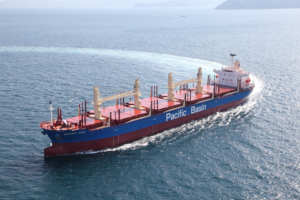Yara Clean Ammonia and Cepsa agreed on a strategic partnership to set up the first clean hydrogen maritime corridor between the ports of Algeciras, Spain and Rotterdam, the Netherlands, for the decarbonization of European industry and maritime transport.
Yara Clean Ammonia will supply Cepsa with clean ammonia volumes, which will allow the energy company to get a head start in establishing the clean hydrogen corridor and lead the initiative to serve industrial and maritime customers in Rotterdam and Central Europe.
The alliance also paves the way for Cepsa to deliver the first clean hydrogen molecules to its customers by using Yara Clean Ammonia’s global supply base and logistical footprint.
Cepsa will build a new green ammonia plant at its energy park in San Roque, Cádiz, near the port of Algeciras, with an annual production capacity of up to 750,000 tons.
“This partnership will lay a solid foundation for industrial efforts to secure clean ammonia and hydrogen for several downstream applications in Europe, while securing the clean transformation goals,” said Magnus Krogh Ankarstrand, President of Yara Clean Ammonia.
“Today’s agreements are a crucial step towards the long-term viability of the Andalusian Green Hydrogen Valley and the implementation of the first maritime corridor of sustainable fuels that will link the South with the North of Europe. Green hydrogen and its derivatives are the fastest, most viable and competitive solution to accelerate the energy transition in heavy transport and ensure energy independence in Europe” said Maarten Wetselaar, CEO of Cepsa.
Yara Clean Ammonia is part of Yara International, which has its largest ammonia and fertilizer plant in the Netherlands. Since 1929, the Dutch Yara site has been located in Sluiskil on the Ghent-Terneuzen canal, a major deep-sea waterway opening into the North Sea and connecting European inland rivers and railway all over Europe.
Yara Clean Ammonia operates the largest global ammonia network with 15 ships and access to 18 ammonia terminals and multiple ammonia production and consumption sites across the world.



